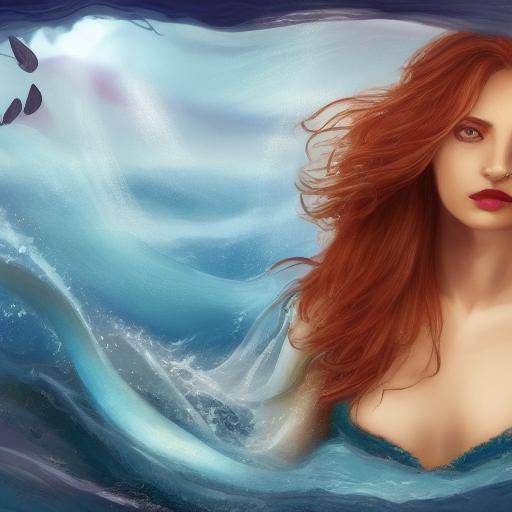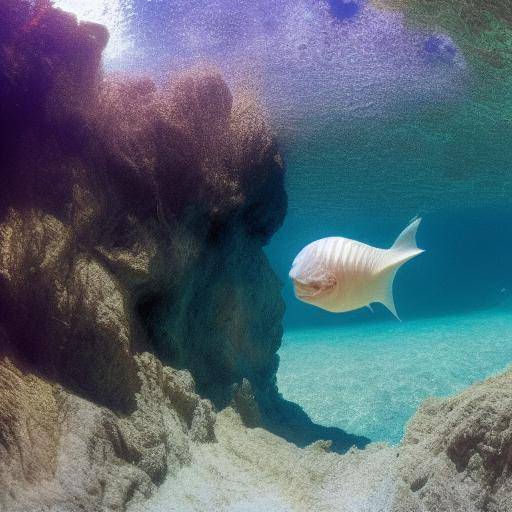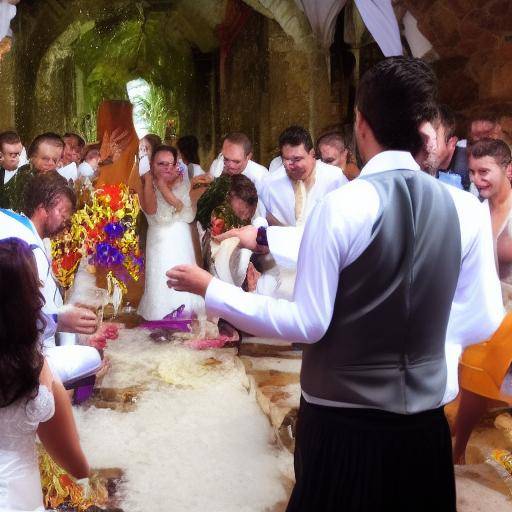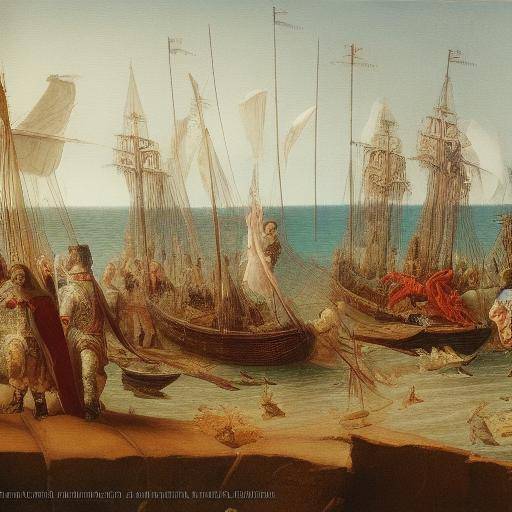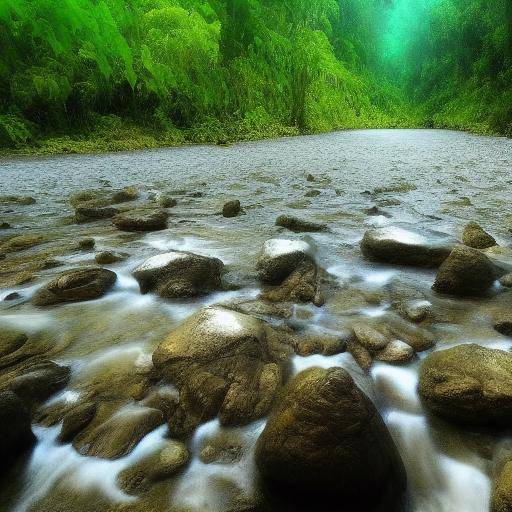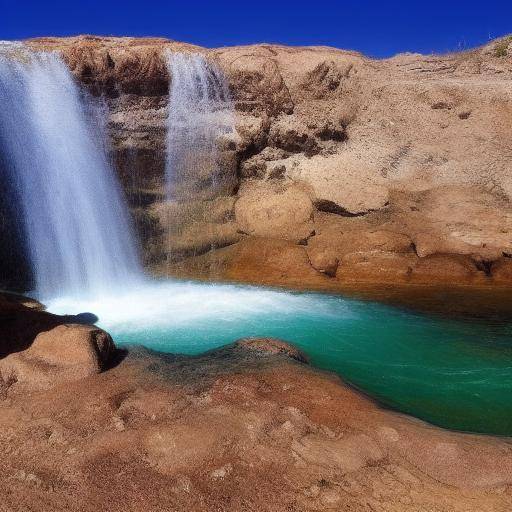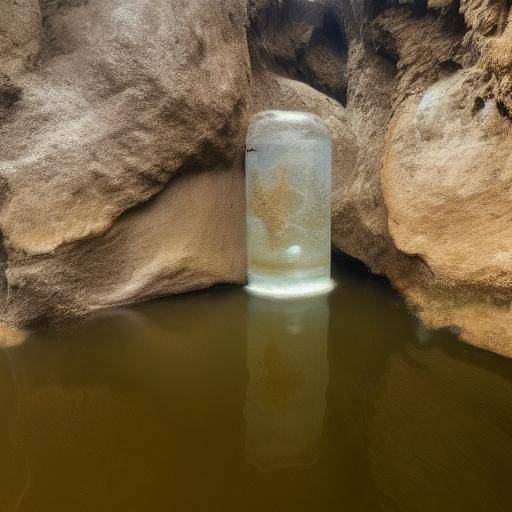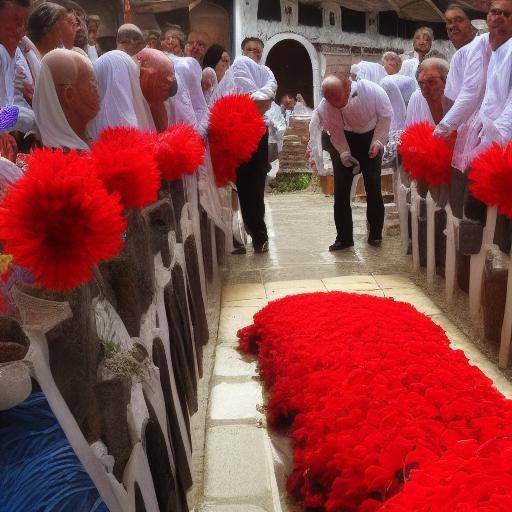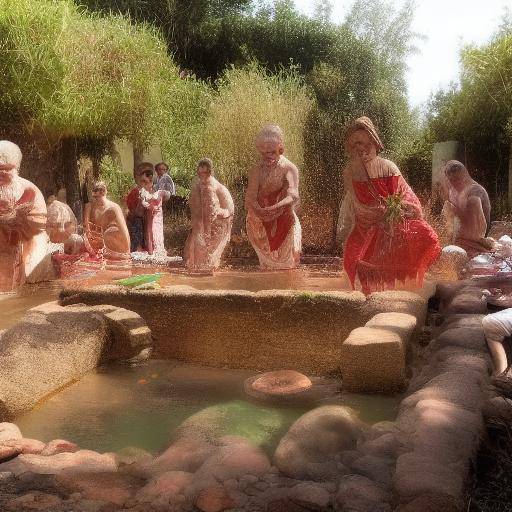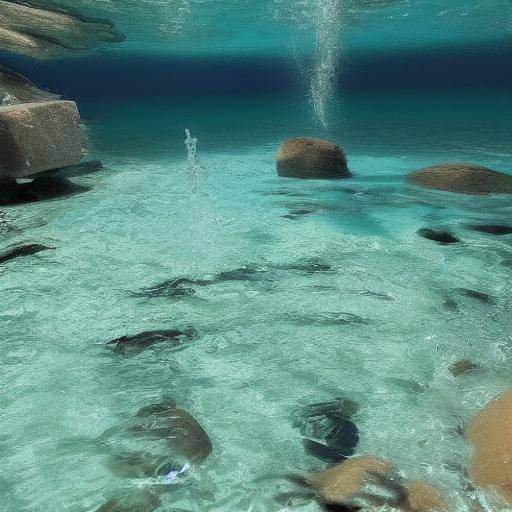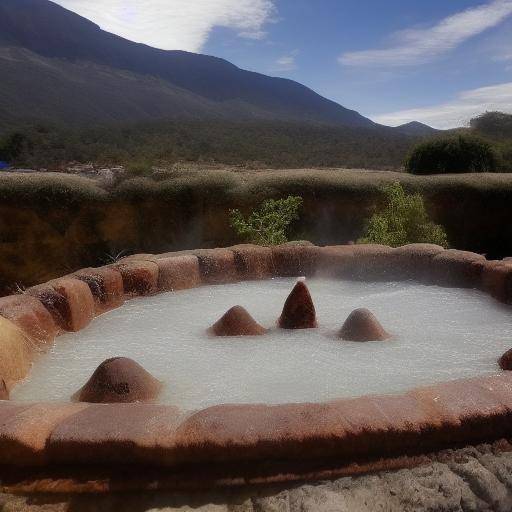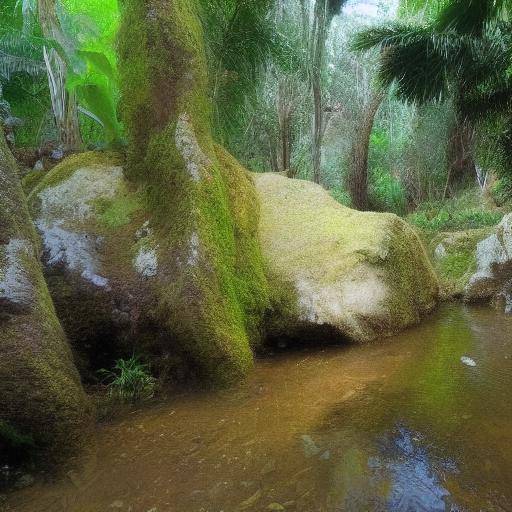
In Slavic mythologies, there is a mythological figure that has captivated imagination and intrigued many cultures: the Rusalkas. These aquatic beings, known as freshwater mermaids, have a rich and complex history that has endured throughout the centuries. Join us on this exciting journey as we explore the fascinating legends of the Rusalkas, their relationship with the water and mystery surrounding the drowned.
Introduction
Rusalkas are legendary beings that inhabit rivers, lakes and springs in Slavic countries such as Russia, Ukraine and Poland. They are often portrayed as beautiful women with long hairs and the ability to seduce men with their melodious songs. However, under their charming appearance, they are said to hide a dark side: they are often seen as vengeful spirits seeking revenge for the tragedies they suffered in life.
In this article, we will immerse ourselves in the depths of Rusalkas mythology, explore their connection with water and examine the fascinating relationship they have with the drowned. We will discover the history and background of these mythical beings, analyze in depth their cultural influence, compare their mythology with that of other known mermaids and offer practical advice to those who are fascinated by these legendary creatures.
History and Origins
The Rusalkas have their roots in the old Slavic beliefs, where they were closely associated with fertility, water protection and spring rituals. Over the centuries, his image has evolved, acquiring darker and mysterious connotations. Rusalkas are believed to be spirits of tragically deceased women, especially those who died drowned, either by accident or by suicide. His connection with water is fundamental in his mythology, since his spirit is believed to wander eternally into bodies of water, seeking revenge or lost love.
Throughout history, the Rusalkas have been a source of inspiration for countless literary, musical and artistic works, capturing the imagination of entire generations. His image has been portrayed in various ways, from the seductive and charming to the sinister and frightening, which reflects the duality of his myth. As popular culture embraces nostalgia for folk traditions, Rusalkas continue to be a living presence in collective imagination.
Analysis in Deep
In deepening the mythology of the Rusalkas, it is important to understand its symbolic role and its impact on society and culture. Over the centuries, these creatures have served as metaphors of human duality, representing both the beauty and the dangers of the natural world. Their connection with the drowned adds an additional layer of complexity to their myth, as they are seen as guardians of the spirits of those who perished in the water.
It is interesting to note how these stories have endured through generations, adapting to cultural changes and maintaining their relevance in contemporary society. Despite the advance of science and technology, fascination with the mystical and the supernatural persists, and the Rusalkas remain a source of inspiration for creators around the world.
Comprehensive review
The Rusalkas, the water and the drowned are intrinsically intertwined in the narratives of Slavic mythology. By exploring these connections, we can appreciate the wealth and complexity of these stories that have resisted the passage of time. As we continue to reflect on these issues, it is important to remember that, beyond its mythological facet, water plays a key role in the daily lives of many communities, both as a source of life and as potentially dangerous. Although the Rusalkas are fantastic figures, their legend invites us to reflect on the relationship of humanity with water, reminding us of their power to give and take away life.
Comparative analysis
By comparing the mythology of the Rusalkas with other stories of mermaids and aquatic creatures in different cultures, we can identify similarities and differences that shed light on the universality of these narratives. The stories of seductive and dangerous sirens are common in many cultures, demonstrating the timeless relevance of these creatures in the human psyche. However, each myth has its own distinctive characteristics that reflect the specific beliefs and values of the culture from which they come.
Practical Tips and Accessible Tips
If you are attracted to the mystique of the Rusalkas and the symbolism of water, there are various ways to explore these topics beyond the mythological sphere. Consider reading literary works that address mermaid stories or travel to places with a rich folk tradition to immerse yourself in the atmosphere that inspired these legends.
Perceptions of Industry and Expert Reviews
By consulting experts in mythology, folklore and cultural studies, we find a variety of opinions on the meaning and importance of the Rusalkas. Some scholars see them as manifestations of universal archetypes, while others highlight their relevance in the preservation of local cultural traditions. Regardless of interpretation, the Rusalkas remain an issue of interest and debate for academics and fans alike.
Case Studies and Real Life Applications
Despite their mythological nature, the stories of the Rusalkas and their relation to water and the drowned have had an impact on the collective consciousness and cultural identity of the Slavic communities. In addition, the artistic performances of the Rusalkas have inspired works of theatre, ballet, music and cinema, demonstrating their lasting influence on the world of art and creativity.
Future Trends and Predictions
As society continues to evolve, Rusalkas' stories are likely to continue to resonate in new forms and contexts. Mythology, as a reflection of human concerns and concerns, adapts to contemporary realities, maintaining its relevance over time.
Conclusion
The myth of the Rusalkas, the element of water and the tragedy of the drowned are intertwined in a complex network of narratives that transcend time and space. This interconnection invites us to reflect on our relationship with the environment, the legacy of ancestral traditions and the very nature of humanity. Through these stories, we find an evocative expression of human anxieties and hopes, taking us to an emotional journey that will last long after these legends have ceased to tell.
Frequently asked questions
What do Rusalkas mean in Slavic mythology?
Rusalkas are feminine spirits associated with water and fertility in Slavic mythology. They are often represented as seductive creatures that can be both benevolent and vindictive.
What is the connection between the Rusalkas and the drowned?
The Rusalkas are closely linked to those drowned in Slavic mythology. Rusalkas are believed to be spirits of tragically deceased women, especially by drowning, and are often seen as guardians of the spirits of the drowned.
What is the cultural importance of the Rusalkas today?
The stories of the Rusalkas remain an important part of folklore and the culture of the Slavic countries. Moreover, its influence extends to various artistic manifestations, and its myth remains a source of inspiration and debate in the academic world.
What other mermaid myths share similarities with the Rusalkas?
Many cultures have their own versions of the mermaids, such as the Gorgonas in Greek mythology, the Loreleis in German tradition, and the Ondinas in Nordic mythology. Despite differences, these creatures share certain characteristics, such as their association with water and their ability to seduce humans.
How has the representation of the Rusalkas evolved in contemporary art and culture?
Over the centuries, the Rusalkas have been portrayed in various ways in literature, music, cinema and other forms of artistic expression. His image has evolved from seductive and benevolent to sinister and revenge, reflecting changes in cultural and social perceptions.
What lessons can we learn from the Rusalkas stories and their connection to water?
The stories of the Rusalkas invite us to reflect on the complex relationship between humanity and the environment, as well as on universal human emotions and conflicts. They also remind us of the importance of preserving and honoring cultural and folk traditions.
What role do Rusalkas play in the daily lives of contemporary Slavic communities?
Although the Rusalkas are legendary figures, their presence continues to feel in the daily lives of many Slavic communities through folk festivals, theatrical performances and ritual celebrations. Moreover, its myth remains a crucial element in building cultural identity.
How do Rusalkas' stories influence the perception of water and water safety?
Rusalkas' stories can serve as reminders of the importance of respect for water and awareness of the dangers it can present. In addition, they can promote water valuation as a vital resource and the development of safe practices in aquatic environments.
As we explore the depths of Rusalkas mythology, water and drowned, we immerse ourselves in a world of beauty, mystery and danger. These stories challenge us to reflect on our relationship with nature, our traditions and ultimately with ourselves. As water continues to be a source of life and danger, the Rusalkas persist as a reminder of the complexity and power inherent in the natural world.
In conclusion, the Rusalkas are much more than simple mythological figures; they embody the intersection of the human and the supernatural, beauty and tragedy, love and revenge. As we continue to explore these fascinating narratives, we enter into a realm where the boundaries between the real and the fantastic are blurred, reminding us of the eternal fascination that the stranger exerts over human imagination.


